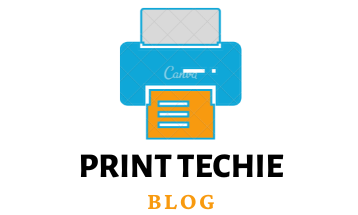Sublimation ink is an amazing tool that lets you transfer all sorts of images and designs onto different materials, from ceramics to fabrics. But how does it work? Well, sublimation is like magic – it turns ink from a solid into a gas, and then back into a solid again on the surface of your material. On the other hand, waterslide paper is a thin, see-through sheet coated with a special adhesive. It’s perfect for printing designs onto hard surfaces like metal, glass, and ceramics. This article is here to answer the question: Can you use sublimation ink on waterslide paper? And if so, when would it be the best choice for your project?
Can Sublimation Ink be Used on Waterslide Paper?
Yes, you can use sublimation ink on waterslide paper. However, there are important factors to consider, such as the type of material, preparing the surface, and using high-quality ink and a suitable printer. Before deciding on this method for your project, it’s wise to compare it with other printing techniques. Keep in mind that not all materials are compatible with this process, and you might need specialized equipment and specific types of inks.
Understanding Waterslide Paper
Waterslide paper is a special kind of thin, clear film coated with adhesive. It’s designed to transfer designs onto hard, non-porous surfaces like metal, glass, and ceramics. First, you print your design using an inkjet printer. Then, you dip the paper in water for a few seconds to activate the adhesive. After that, simply place the design on your material and smooth out any bubbles or wrinkles. Finally, heat the material to a high temperature, usually between 150-180 degrees Celsius, to complete the transfer process.
Key Features of Waterslide Paper:
Paper Composition:
Waterslide paper is made of a thin, see-through film with a special adhesive that activates when wet. This allows for easy transfer of designs onto hard surfaces like glass, ceramics, and metal. Plus, it’s durable enough to withstand the heat of the transfer process.
Transfer Process:
Using waterslide paper is simple. Print your design on the special inkjet paper, then dip it in water to activate the adhesive. Carefully place the design on your material, smoothing out any bubbles or creases. Finally, heat the material to 150-180 degrees Celsius to complete the transfer.
Print Quality:
Waterslide paper produces high-quality prints with accurate colors and details. However, the type of ink and surface material you use can affect the final result.
The waterslide paper is essential for transferring clear and vibrant designs onto hard surfaces. Its transparent film makes it easy to position your design precisely, and its adhesive can be activated quickly with water, simplifying the transfer process. Plus, it ensures high-quality prints with accurate colors and details.
Compatibility of Sublimation Ink and Waterslide Paper:
Factors to Consider when Using Sublimation Ink on Waterslide Paper:
For optimal outcomes when using sublimation ink on waterslide paper, it’s essential to consider various factors, including the material onto which your design will be transferred, the surface quality of the printing surface, and the type of inkjet printer being utilized.
Material Compatibility:
Before embarking on any design project, it’s crucial to ensure that your base material is compatible with both sublimation ink and waterslide paper. Sublimation ink works well on polyester fabrics, ceramics, and some plastics, while waterslide papers are suitable for hard surfaces like glass, metal, or ceramic objects. Neglecting this step can lead to complications later on.
Surface Preparation:
Prior to beginning the transfer process, it’s imperative to ensure that your printing surface is free from oils or contaminants. This simple step is vital for ensuring excellent print quality and successful adhesion.
Printer Compatibility:
Before using sublimation ink, confirm that your printer is compatible with this ink type. Moreover, the printing quality may depend on the printer itself, so using a high-quality printer is advisable for the best results. Fulfilling these conditions, such as ensuring ideal material and surface preparation and owning a suitable printer model, increases the likelihood of successful design transfers onto waterslide paper using sublimation ink.
Read: How long does 100ml of sublimation ink last?
Potential Issues and Solutions:
While using sublimation ink on waterslide paper can encounter inherent challenges, proper preparation and foresight can prevent major issues.
Adhesion Issues:
Improper preparation or unsuitable materials may result in the ink not adhering correctly to the material’s surface. To avoid this, ensure thorough surface preparation and compatibility with sublimation ink.
Print Quality:
Lower-quality printers or sublimation ink with inadequate properties may lead to less-than-desired print results. To ensure high-definition outcomes, opt for advanced printing devices and inks specifically formulated for waterslide paper. Proper maintenance and adjustment of printer settings according to the project requirements can also enhance print quality and minimize issues with sublimation ink on waterslide paper.
Advantages and Disadvantages of Waterslide Paper over Other Printing Methods:

When choosing printing techniques for various items, it’s essential to consider the advantages and disadvantages of each method.
Advantages:
Waterslide paper enables precise design placement and can be used on a variety of hard, non-porous surfaces. Sublimation ink offers vibrant, long-lasting colors suitable for polyester fabrics, ceramics, and select plastics.
Disadvantages:
However, this method may not be applicable to all materials and requires specialized equipment and ink. Additionally, it may take longer than other methods and necessitates a higher level of expertise for successful execution.
Read: can you use sublimation ink for regular printing?
Conclusion:
Sublimation ink and waterslide paper can be combined as a printing method for specific projects. However, it’s crucial to consider factors such as material compatibility, surface preparation, and the quality of ink and printer. Comparing this method with others can help determine the best option for a particular project. Waterslide paper facilitates precise design placement and can be used on a wide range of hard, non-porous surfaces.

